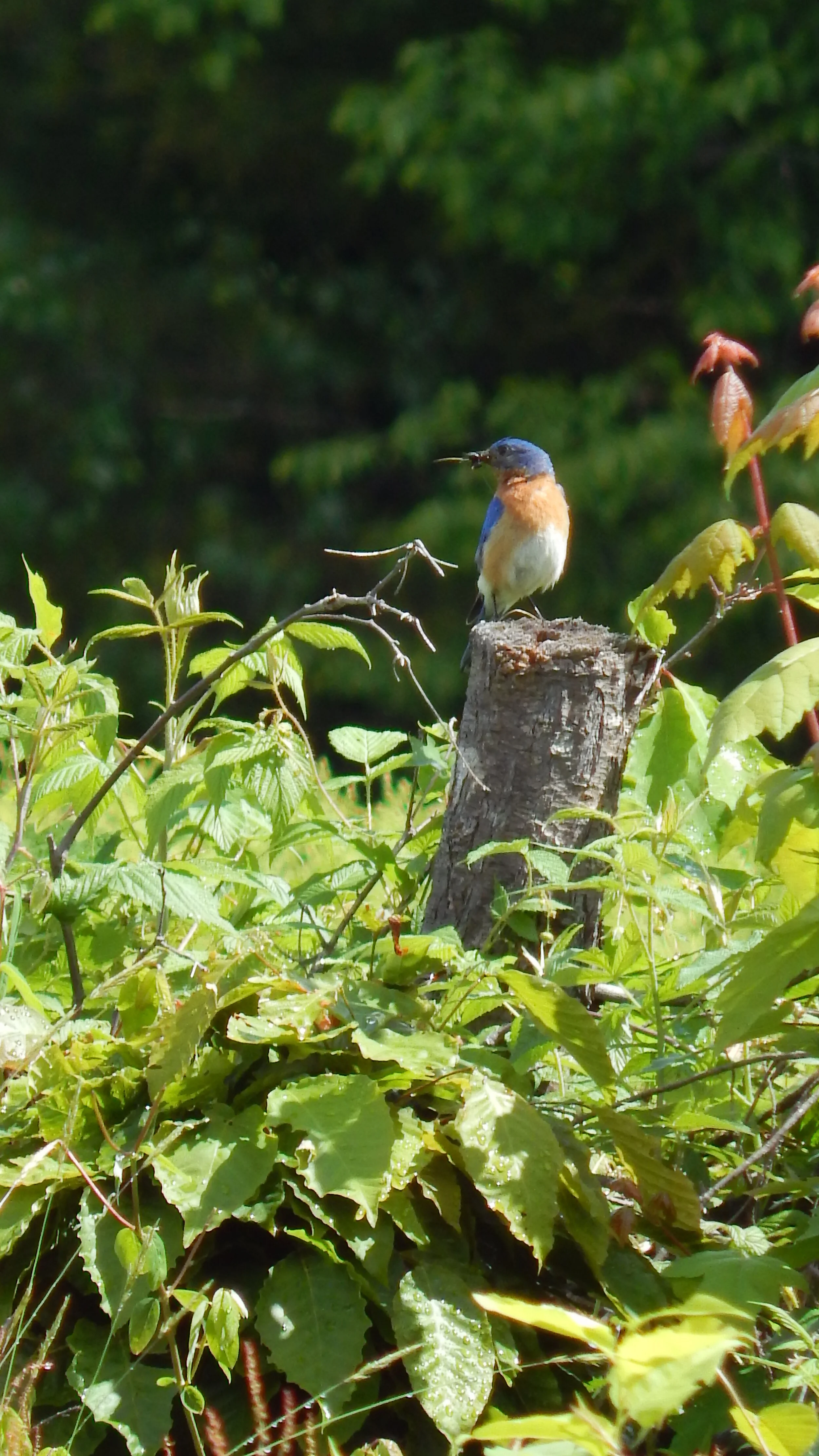Looking for somewhere to explore on a spring walk while practicing “social distancing” (physical distancing!) with a family member or friend?
The trail on CLC’s Charlotte C. Browne Woods is a nice place to get outside for a walk when the snows are gone and you are looking for spring exercise. It provides a moderate walk through fields, uplands, and along the edges of the Chocorua River before looping back through the woods and past a giant glacial erratic.
Parking for the trail is on the north side of Washington Hill Road, at the edge of the field and just across from Juniper Lane (private drive). Look for the Charlotte C. Browne Woods sign, and two crabapple trees at the edge of the field. A grassy trail winds northeasterly through blueberry fields, past bluebird nest boxes and fruiting shrubs, and in to the woods before veering off along the wetlands in an easterly (upstream) direction.
The main trail is a dead end but provides nice views of the upper Chocorua River wetland, and glimpses of Mount Chocorua along the way. Further to the east, the extensive wetland that can be seen is on private land, but protected by conservation easements, with another CLC property (the Tewksbury Lot) at the furthest edge. The wetlands are a wonderful place to look and listen for birds, especially during the spring and fall migrations. A diversity of wetland and bog-related plant species can be seen all along the wetland edges.
Black spruce, larch and red maple is common, with winterberry, high bush blueberry, sweet gale and alder in the shrub layer. In among the dense mats of sphagnum moss, plants such as sheep laurel, cranberry, Labrador tea, bog laurel, sundew and pitcher plants can also be found. These specialized plants all have the ability to thrive in the wet, nutrient poor and acidic “soils” found in these wetlands.
Hikers are welcome to explore the wetland along the trail, but please do not venture past the dead-end on to private property. On the return trip, hikers can take the other loop back and up the hill and past a large glacial erratic. It looms in the forest all by itself, except for the piece that broke off at some point in its history and sits by the side. Polypody ferns (sometimes called rock cap ferns) grow on its surface along with rock tripe, a large leathery-looking lichen.
Look for bluebirds and swallows near the nest boxes on your return trip. If they haven’t arrived yet, they will be soon!
Banner: Bluebird in a field. Photo: Deb Marnich

